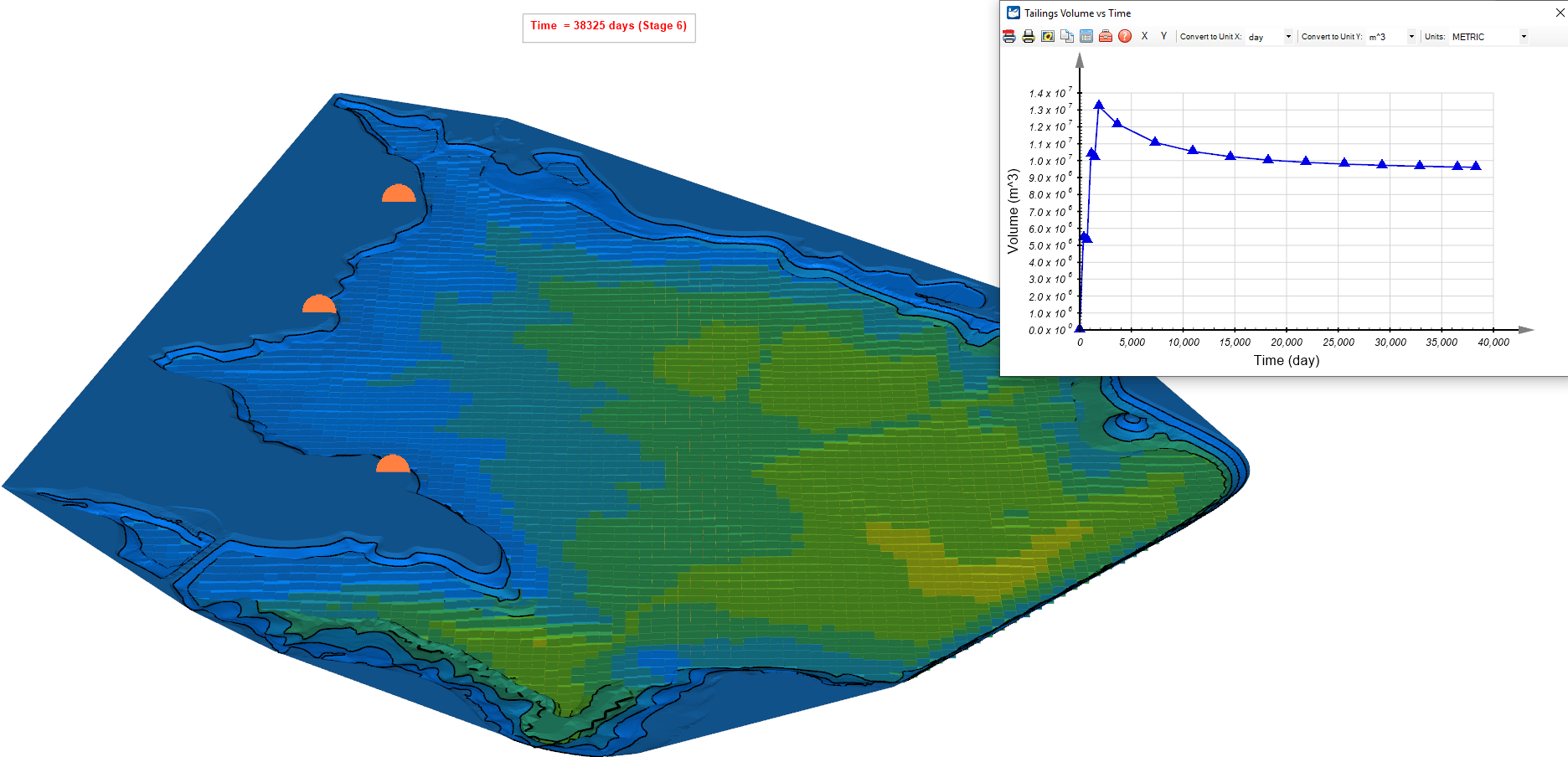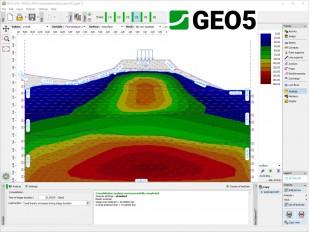Advantages of pseudo-3D consolidation analysis with SVSOLID, SVFLUX Featured

Tailings Management Facilities (TMFs) require the numerical modeling of large-strain consolidation to represent the release of water with time. Such numerical modeling in the state of practice has traditionally involved running a single 1D large-strain consolidation numerical model at the center of the deposit and inferring long-term performance of the entire deposit from the results. The difficulty with such a methodology is that the 3D effects of depositing in a TMF are not fully considered. Full 3D numerical modeling of the large-strain consolidation process has been performed; however, it remains technically challenging to model the deposition process in a 3D model.
Learn more about the SOILVISION 2D/3D Suite
Pseudo-3D consolidation
The pseudo-3D methodology couples a 3D slurried tailings deposition scenario with the effects of saturated 1D large-strain consolidation in order to model the volume of tailings in a TMF over time. The deposition process is represented by a 3D methodology that determines the shape and elevation of the tailings surface prior to consolidation. The consolidation process is modeled through a discretization of the 3D model into a grid of independent 1D models. The settlement of the 1D models provides an approximation of the 3D consolidation model vs. time as well as the tailings volume over time. Each “cell” of the grid represents a full 1D large-strain consolidation numerical model and is solved based on the tailings deposition scenario. The advantage of this method is that it is robust — each 1D numerical model is relatively easy to solve with the solution being simply a function of time. This methodology does not consider lateral seepage or deformations and is ideally suited for facilities with a high horizontal to vertical ratio in their geometry.
Advantages of the pseudo-3D approach to consolidation modeling
- The analysis is stable and reliable because it is based on solving relatively simple 1-D numerical models
- The finite-element analysis does not become more challenging or time-consuming due to complex layering or irregular/detailed ground surface geometry (in a full 3D analysis, complex geometry can lead to a large number of mesh elements and element shape quality issues, both of which can cause long solution times)
- The analysis is well suited for parallel computing
- Depositional surfaces are automatically created by the software based on the filling scenario
- The analysis is ideally suited for facilities with a high horizontal to vertical ratio in their geometry
- The effect of bottom drainage can be easily represented in the numerical model
Learn more about the SOILVISION 2D/3D Suite
Sources: Pseudo-3D Consolidation Analysis Bentley Tips, Pseudo 3-D deposition and large-strain consolidation modeling of tailings deep deposits, Murray Fredlund, Matt Donaldson and Krishna Chaudhary - 2015, Large-Strain 1D, 2D and 3D Consolidation Modeling of Mine Tailings, Fredlund, M.D., Ph.D., Donaldson, M., Gilson Gitirana, Ph.D. - 2009
Want to read more like this story?

Why Run PLAXIS 3D Analysis?
Jun, 07, 2021 | NewsMost geotechnical engineers use FEA software packages for their geotechnical design. It is especial...

How to create 3D dykes using SOIVISION 3D extrusion tools
Sep, 04, 2020 | NewsAdvanced 3D tools such as SVDESIGNER offer a lot of power to the user, but such power is not alw...

SIG Workshop: Geotechnical Analysis – 3D large-strain consolidation analysis in SVFLUX and SVSOLID
Oct, 06, 2020 | EventThis Geotechnical Analysis Special Interest Group focuses on efficient 3D analyses for slurried tai...

GeoStudio 2022.1 new release is here!
Oct, 27, 2022 | NewsIn the latest GeoStudio version, you’ll notice improvements to speed up your geotechnical 3D workfl...

PLAXIS 2023.2 New release is out!
Sep, 07, 2023 | NewsThis latest release solidifies Seequent's Connected Geotechnical Workflow, reducing the need for du...

GEO5 FEM - Consolidation
Aug, 30, 2019 | Software
PLAXIS LE
Oct, 21, 2013 | Software
Numerical Modelling: On the Importance of an Appropriate Soil Model
Jul, 22, 2021 | EducationThe following was prepared by Dr. Ronald B.J. Brinkgreve, and first presented by Virtuosity. Numeri...

PLAXIS Designer
Feb, 05, 2020 | SoftwareForm
Looking for more information? Fill in the form and we will contact Bentley for you. Alternatively, you can visit Bentley's website and speak with a Bentley Geotechnical Expert.
On This Day
April 18th 1906
READ MORE
Trending

What controls the height of the world's mountains?

How Do Dams Trigger Earthquakes?

Richat: The Giant Blue Eye of Africa

Network Rail to invest £2.8 billion in British railway climate resilience

Rockfall Mitigation Project in West Virginia



